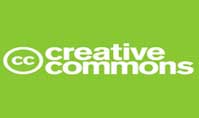VUT DigiResearch
Digiresearch is the VUT electronic open access archive. Its purpose is to collect, distribute and preserve the research performed by the VUT Research community
Slide 1 of 11 

Slide 2 of 11 

Slide 3 of 11 

Slide 4 of 11 

Slide 5 of 11 

Slide 6 of 11 

Slide 7 of 11 

Slide 8 of 11 

Slide 9 of 11 

Slide 10 of 11 

Slide 11 of 11 

Communities in DigiResearch
Select a community to browse its collections.
- Inaugural addresses, Presentations etc.
Recent Submissions
Employees' perceptions of the effects of retrenchment on job stress and organisational commitment in a mining company
(Vaal University of Technology, 2016-11) Seteni, Landiswa Pilvia; Joubert, P. A., Dr.; Dhurup, M., Prof.
In the decade before 2005, South African organisations have had to cope with an ever-increasing rate of local and global changes. There have been considerable and ongoing socio-political changes, resulting from new Government regulations. Most organisations have experienced some type of downturn, whether due to external business factors or poor internal performance. A typical response to organisational decline is retrenchment. Retrenchment is attributed to cyclical downturns, market losses or other economic factors, which oblige the employer to reduce the labour force numbers.
Though there are so many ways of responding to organisational failure, this study focused only on retrenchment. A number of psychologists and human sciences researchers have studied the results of job loss due to retrenchment. Retrenchment brings loss of skills, loss of morale and commitment, as well as physical and mental health degradation, including stress that results in employees withdrawing physically and emotionally.
The main purpose of this study was to outline the employees’ perceptions of the effects of retrenchment on job stress and organisational commitment in a mining company. The research methodology used in this study is a combination of a literature review and an empirical study. The probability sampling technique, which entails using simple random sampling, was used to select the sample of the study. The primary data were collected using a questionnaire. The measuring instrument contained 43 items. The measuring instrument was pilot-tested with 50 respondents three weeks before the main survey; the questionnaire was self-administered to the participants. For the main survey, data from 294 respondents were collected and analysed. Participants in the study involved surface employees, including management, administrators, engineers and artisans.
Data were analysed with the Statistical Package for Social Sciences (SPSS) version 23.0. The Cronbach’s alpha coefficients of the various sections of the measuring instrument were computed to establish construct validity. Content validity was ascertained by pre-testing the questionnaire with the employees in the mine in question. Correlations were used to establish convergent validity of the constructs. Convergent validity was assessed to measure the degree of linear association of variables using Pearson’s correlation coefficient. Discriminant validity was achieved by using regression analysis to show items loaded onto different factors in various sections which had more than one factor.
Analysis was done using descriptive statistics on the demographic information of respondents. The results were also interpreted through correlation and regression analysis. The results showed that the effects of retrenchment did not have a negative impact on job stress (time stress and anxiety). This may be due to the mine in question planning and consulting with the employees prior to the retrenchment process. The results also showed that job stress (time stress and anxiety) is negatively associated with organisational commitment. Subsequent to these findings, it is recommended that employees (survivors) be updated on their future in the company in question. This could be done through regular workshops and counselling of employees.
In order to motivate and engage employees, and thereby contribute to employee commitment, it was also recommended that organisations create open, supportive and fair organisational and team cultures, and ensure jobs are clearly aligned with organisational goals and have appropriate levels of autonomy, support and career development. Given that job satisfaction plays a huge role in organisational commitment, it was further recommended that managers need to actively improve their organisation’s job satisfaction to employees in order to achieve a higher level of organisational commitment.
The study concludes by recommending that communication between employees and management should take place on a regular basis which can serve as a fundamental tool to retrenchment in the following manner:
• Survivors will feel more committed to the organisation when the basis of retrenchment addresses the circumstances in the external environment, rather than the enrichment of shareholders or top management.
• Communicating a clear vision of how retrenchment will benefit stakeholders, increases commitment since survivors can see a clear future for the organisation.
• When survivors are treated with dignity and respect, they will feel more committed to the organisation because they feel appreciated.
Determination and improvement of wear and abrasion properties of Glass Reinforced Plastic (GRP) piping for slurry applications
(Vaal University of Technology, 2014-09) Van der Schyff, A.; Mendonidis, P., Prof.
Glass Reinforced Plastics (GRP) are composite materials comprising a resin matrix reinforced with glass fibers, and are well known for their excellent corrosion resistance and high strength-to-weight ratios. However, their use in slurry transporting pipes is uncertain because the wear resistance of GRP pipe materials is not well documented due to the difficulty encountered in standardizing mechanical properties of GRP pipes. The aim of this project was to identify the main variables that influence the wear and abrasion properties of GRP pipes and the differences of abrasion properties between the continuous and discontinuous filament wound pipes that are manufactured by Amitech SA. In order to achieve the aim of the project, the mechanisms of wear in ductile and brittle matrix GRP composites were investigated. The Pin-on-disk and Jet-impact tests were identified as the best abrasion tests suited for testing GRP composites. Data collected from these tests indicated that the resin type, curing, additive content and- type, fiber content and manufacturing methods are factors affecting wear resistance. It was further found that hard surfaces provided better resistance to abrasive wear, whereas ductile matrices performed better under erosive wear.
Influence of job embeddedness on job satisfaction and job performance among employees within South African Police Service Academies
(Vaal University of Technology, 2022-05) Tala, Ratsela Johannes; Marais, Christel, Dr.; Grobler, Bennie, Prof.
Background: The South African Police Service (SAPS) faces various challenges relating to service delivery, which is viewed as stressful, demanding, and dangerous. Members work long, stressful hours under adverse and challenging working conditions. These demanding working conditions correlate with experienced job embeddedness, job satisfaction and job performance.
Moreover, in addition to these challenges police employees suffer from physical ailments, such as heart condition, hypertension and sugar diabetes, mellitus, and psychological problems, such as cynicism: feelings of hopelessness, suicidal thoughts and suicide. These challenges may lead to absenteeism, resignations and ineffective organisational performance.
Many SAPS personnel at various academies have been employed in the Human Resource Development (HRD) for a prolonged time, and employee turnover is low. This suggests that they are committed to their job and experience job embeddedness. Research has shown that job embeddedness might predict job satisfaction and performance. The study aimed to investigate this relationship in the context of SAPS academy employees to inform SAPS management in assisting police officers in performing their role despite the challenges they face.
Training is a high priority in the SAPS, the academies of which are expected to prepare future police officers to fill their roles effectively. However, the SAPS academies, which are expected to provide training and development, have limited human, financial and logistical resources owing to current political and socio-economic circumstances. Therefore, although employees in these academies may face challenges to their job embeddedness, job satisfaction and job performance, they remain in their jobs, which is a situation that the study aimed to explore.
Aim: The study described in this thesis aimed to investigate the influence of job embeddedness on job satisfaction and job performance amongst employees within South African Police Service academies, viewing it as a holistic construct.
Methodology: The research methodology followed to conduct the study was a combination of a literature review and an empirical study. Existing scholarship informed a theoretical understanding of the topic. An empirical investigation was conducted to achieve the aim mentioned above. In addition, a quantitative descriptive research design was adopted to investigate a sample of 400 employees working in the 23 academies nationally. Data were collected using a structured questionnaire as the collection instrument which was piloted with 25 respondents and then hand-delivered to the respondents of the main study. Simple random sampling accurately reflected the larger population (N=956).
Results and Discussion: The research results indicated that job performance and job satisfaction are causally related via job embeddedness acting as a mediator. Moreover, the relationship between job performance and job satisfaction was found to be non-recursive. The total effect of job performance on job satisfaction is larger (.5956) than the total reciprocal effect between job satisfaction as a predictor and job performance as an outcome (0.4061). The research supported the view that job satisfaction and job performance have a reciprocal relationship moderated by other variables such as job embeddedness. This finding does not support the initial hypothesis that job satisfaction acts as a mediator between job embeddedness as a predictor and job performance as an outcome.
General: As little research has been conducted on the relationship between job embeddedness, job satisfaction and job performance in the SAPS and the public sector in South Africa, relevant literature was not readily available for the study. In addition, the study had other limitations, which are highlighted in this thesis to inform similar future studies. However, the results provided insights that researchers in South Africa might find helpful, although the effect of job embeddedness as a holistic construct on various variables needs to further investigated in the context of the SAPS.
Conclusions: The study revealed that job performance, directly and indirectly, affects job satisfaction with job embeddedness acting as a mediating variable. The association between job satisfaction, job performance and job embeddedness as dependent variables and gender as an independent variable found no significant relationship. However, the relationship between race and first language as independent variables and job performance and job satisfaction as dependent variables differed significantly.
In the questionnaire, white respondents agreed significantly less strongly with the job satisfaction and job performance constructs than the black African and coloured respondents. This difference was present in the task and contextual performance sub-dimensions of job performance. The Nguni first language group agreed significantly more strongly with the job performance and job satisfaction constructs than the Afrikaans first language group. This result was also true for the two sub-dimensions of job performance, namely task and contextual performance, with task performance being perceived as slightly more important than the contextual performance by the Nguni group. No significant associations could be found between age, educational level, marital status and the number of years employed as a government employee as independent variables and the three dependent variables of job embeddedness, job satisfaction and job performance.
Recommendations: The study led to recommendations for management practice, which might be helpful to the management of the human resource development division of the SAPS. The study provided essential information about the importance of job embeddedness in the working environment and its effect on employees’ job performance and job satisfaction who are expected to provide quality training in the SAPS. In addition, the study led to recommendations for future research by enhancing the knowledge base related to job embeddedness in the context of the South African public service sector. In conclusion, job embeddedness as a holistic construct and its relationship with other variables, needs to be explored further, especially in the context of the SAPS and its academies.
Structural performance of KAT-7's ball screw raceway in the elastic region subjected to varying loads
(Vaal University of Technology, 2017-12) Steenekamp, Nicolaas Kruger; Masu, Leonard, Prof.; Alugongo, Alfayo, Prof.
The structural performance of a KAT-7’s ball screw raceway is not known. No performance data has been generated analytically, numerically nor experimentally. For this study, data was generated in the elastic region of the material. This research was undertaken in three different ways namely analytically, numerically and experimentally. A calibrated load cell was used to validate the analytical solutions. Solid Edge, a parametric software package was used to validate analytically the accumulated rain water mass and structural mass. Abaqus, a finite element analysis software package, was used to model and obtain the ball bearing Hertzian contact stresses numerically. The numerical solution was used to validate the laboratory compression test results on a replica KAT-7 ball screw assembly. The weighted percentage errors between the analytical model data and load cell data were found to be higher for load case scenarios with zero m/s and 10 m/s wind speeds respectively. The parabolic reflector rigid body assumption, exclusion of wind induced hysteresis effects and the quasi-static wind loading site measurement conditions contributed to the weighted percentage error variations. The laboratory and numerical model compression force results revealed a gradual percentage error increase beyond a compression force of 261288 N and up to 572526 N. The percentage error increase had minimum and maximum errors ranging between 6.24 percent and 14.69 percent respectively. The percentage error increase in the numerical model was due to the singular representation of a ball bearing instead of a 212 ball bearings set as experimentally conducted in the laboratory compression test on a replica KAT-7 ball screw assembly. The maximum axial force, F0 , result for load case scenario five was -94469 N with a Hertzian contact stress of 3939 MPa on the raceway surface. The static load rating required to Brinell a deep groove ball bearing raceway was found to be a Hertzian contact stress ranging between 4500 MPa and 4800 MPa. It was evident that the contact stresses incurred under the three considered loads of accumulated rain water, wind loading and structural mass were unable to exceed the 4800 MPa Hertzian contact stress. It was found that a replica KAT-7 ball screw raceway Brinelled under an axial force of 408126 N. The numerical ball screw raceway model Brinelled under an axial force of 380457 N. The Hertzian contact stress at the numerical ball screw raceway surface was determined to be 4898 MPa. Therefore, the Replica KAT-7 ball screw raceway material behaves elastically under an approximate load of up to 38 tonnes.
The relationship between employee retention and talent management at Illovo Sugar Eston
(Vaal University of Technology, 2014-03) Madau, Dolly Nomcebo; Joubert, P. A., Dr.; Grobler, B. J., Prof.
Talent, according to Michaels, Handfield-Jones and Axelrod (2001:12), is a sum of a person’s abilities, his/her intrinsic gifts, skills, knowledge, experience, intelligence, judgement, attitude, character and drive. It also involves the ability to learn and grow. Employee retention has to do with job satisfaction, job involvement, career satisfaction and commitment from employees in the organisation (Noorliza & Muhammad 2006:33-34). According to Ongori (2009:11), employees who are given such recognition by the organisation feel special, valued and appreciated, ensuring an equitable amount of service within it (Ongori 2009:11). The research focused on the relationship between employee retention and talent management at Illovo Sugar Eston with a view to ascertaining whether or not the organisation is possibly the reason for employees leaving for other businesses, and if so to look for possible strategies to help it retain staff. Talent shortage due to failure by organisations to retain staff with the necessary expertise is becoming a reality and it is important that this challenge is addressed expeditiously (Maxwell 2007:273).
The main aim of the study is to investigate and highlight the need and importance of talent management, including attraction and retention of staff with required skills at Illovo Sugar Eston. This will include investigating the challenges relating to attracting and retaining talent within the organisation in order to ensure a continuous supply of qualified staff and to reduce labour turnover. The study will also touch on the importance of competitive incentives and rewards in the attraction and retention of employees.
This will involve strategies to attract and retain talent, to support the attainment of the organisation’s strategic and short-term objectives, by ensuring that it has qualified people, committed and well-motivated to take the business forward (Armstrong 2002:13). Hummayoun and Muhammad (2010:2028) confirm that employees who are empowered are more likely to feel confident and strive for excellence in order to improve production and quality.
To achieve these objectives, a survey was conducted among employees of Illovo Sugar Eston. The findings highlighted that exit interviews are not effective in the retention of staff in that they are carried out when the individual has already made a decision to leave the organisation.
Judging from the results from respondents, it is clear that staff satisfaction leads to high productivity and plays a significant role in the retention of staff. The results further indicated that management strategies are not being used to the extent that they should be in the retention of talent, whilst most respondents felt that fringe benefits currently offered by the organisation had a positive influence in staff satisfaction and in the retention of talented employees. The influence of the Employment Equity Act (55 of 1998) resulted in employees from the non-designated group agreeing with the commonly held perception that people from designated groups use the provisions of the Act to look for better opportunities with other organisation.





